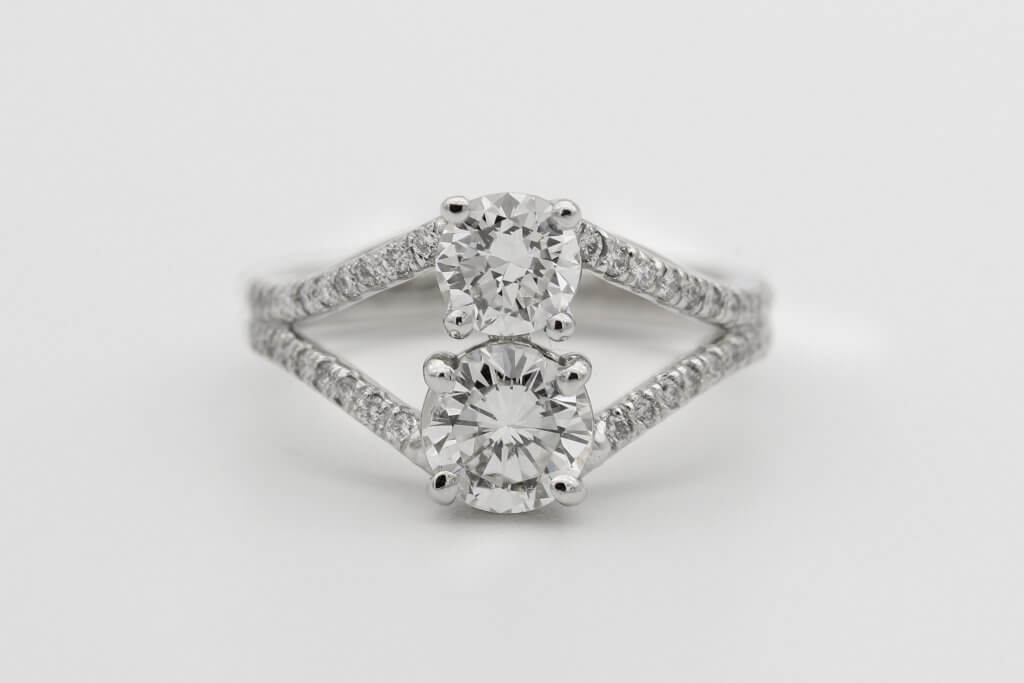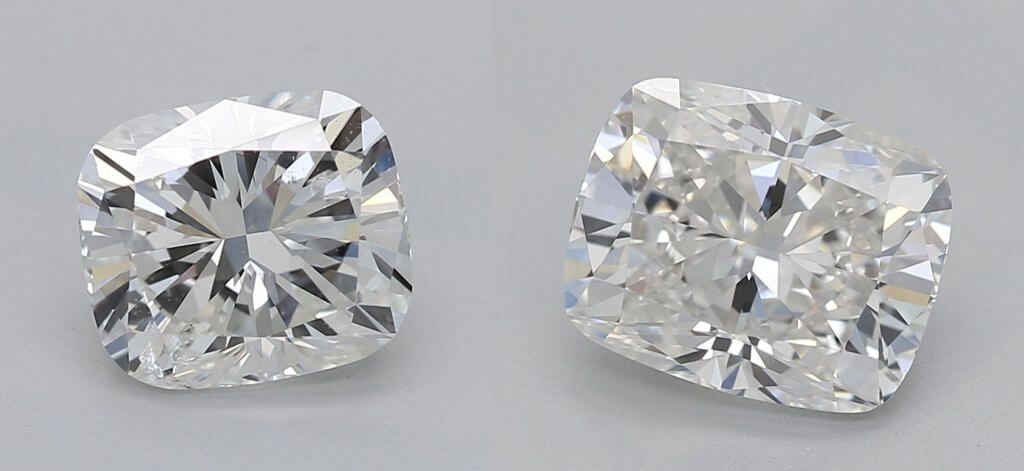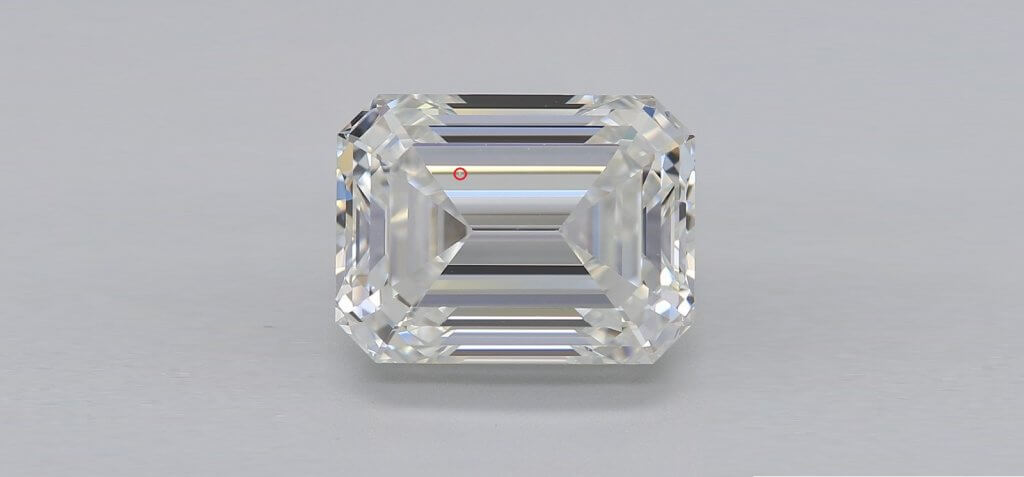Master The Art Of Jewelry Inspection With A Jeweler Loupe
Key Takeaways
- A jeweler’s loupe is a useful tool for looking at diamonds up close and person, even if it’s just a matter of personal interest.
- You can find loupes relatively cheaply online – for around $20. They don’t need to be high-tech or fancy.
- To use a loupe, you’ll want to keep both eyes open, avoid squinting, and use the diamond’s report as a guide for helping you to identify key features.
- It’s important not to get too caught up on what you can see through the loupe. Eye clean diamonds represent far better investments than flawless or near-flawless diamonds, so try not to let any inclusions that show up under the loupe impact your decision.

At WillYou.Net, we spend most of our time talking about centrality eye cleanliness holds for diamond buying – and believe us when we say we’re not about to backtrack on that for a second. The most important thing for any shopper is to find a diamond that looks flawless and free from undesirable color, even though, deep down, it isn’t.
Why? Because this is where the best value for money is found.
But what really is eye cleanliness? We’ve answered that in a lot more detail in a separate guide, but, for now, it’s worth understanding that eye cleanliness is judged by the naked eye, from distance of around six to twelve inches. It doesn’t matter whether a dark spot comes into view when the diamond is magnified, since no one is ever going to wander up to your partner, take their hand, and inspect it through a magnifying glass.
Then again, it’s always good to get to know your diamond on a more personal basis. That’s why we encourage readers to get confident interpreting diamond plots in GIA reports, and why, even with the ‘eye cleanliness > literal flawlessness’ debate clear in their minds, it’s always good to know how to study the diamond through a jeweler’s loupe.
First Off, What is a Jewelers Loupe?
A loupe (pronounced like ‘loop’) is a magnification tool used by jewelers and gemologists to study diamonds and other gemstones much more closely than the human eye allows.
They are pretty basic, hand-held objects – nothing like the big microscopes found in laboratories – and tend to be small enough to fit in the pocket. These tools are also used by watchmakers, who need to be able to study the intricate, mechanical components of a wrist or pocket watch in minute detail while they work.
Most jewelers’ loupes offer 10x magnification which, if you’ve already read our guide to diamond clarity, you’ll know to be the level of magnification used by the GIA to ascertain a diamond’s clarity grade. This means that, using a jeweler’s loupe, you could expect to see a clear abundance of inclusions in an I1 or I2 diamond while, through that same loupe, you would maybe be able to identify vague signs of inclusions in, say, a VS1 or VS2 diamond. In either case, there’s a chance the inclusions you identified would be invisible to you without the loupe.
At the same time, however, what you see through a loupe will tell a pretty different story to what the jeweler sees through the same loupe. Keep in mind that, even under 10x magnification, many diamonds’ inclusions are very subtle – so subtle, even, that you might find yourself overlooking them. For a shopper, understanding the basics of using a loupe is a great way to get to know the diamond they’re investing in a little better, and to grow in confidence when it comes to identifying how a clarity grade manifests within a diamond, but it’s still not as important as your own appraisal of eye cleanliness.
Looking at a Diamond Through a Loupe – Ten Steps
- Look at your diamond’s report
Yep – before you actually pick up your loupe (or your diamond, for that matter) you’ll want to remind yourself of the info printed within the report, so that you can draw those comparisons for yourself. If the diamond has a high clarity grade, there’s a chance you won’t even be able to spot those inclusions without the help of the diamond plot.
Remember that most – but not necessarily all – of a diamond’s inclusions are going to be identified on the diamond plot. In cases of widespread inclusions, like clouds, or inclusions that don’t directly impact the diamond’s clarity grade, they will be listed within the ‘Additional Notes’ portion of the report. - Clean your diamond
Don’t get too fanatical about this – just make sure the diamond is free from fingerprints, oil and grease, and dust. Warm, soapy water and a microfiber cloth will suffice but, if you skip this step, you’re just going to be looking at streaks and specks of dust at 10x magnification. - Find a well-lit area
You want a good, well-diffused area of light. Stay away from direct sunlight or harsh indoor lights since these will only make it more difficult for you to focus on the diamond itself. If the diamond is sparkling too erratically, you’re not going to get a good view of what’s going on inside. Placing a white sheet over your main light source, for instance, is a great way of diffusing that bright beam into something that offering good illumination, without being ‘too much’. - Place the diamond between your tweezers
Remember how you cleaned all that grease and dust off your diamond? You don’t want to replace all that with the natural oils on your fingers, or obscure the diamond’s color with your own skin tone.
Instead, you’ll want to hold the diamond between a pair of jeweler’s tweezers, which are much better for holding the diamond up without impacting what you see through the loupe too much.
Be careful not to grip the diamond too tight – particularly if the girdle is thin, or the shape has fine points (as in the Princess cut, or the Marquise or Pear) – but don’t be too gentle, or your diamond could fall out and disappear somewhere on the other side of the room. Diamonds are tough and resilient, but it’s always better to be cautious. Not only will it keep your diamond safe, but it will prevent your hand from cramping or getting uncomfortable. - Hold the loupe to your eye
If you’ve never used a loupe before, the temptation to hold it a little more like Sherlock Holmes’ magnifying glass can be there. The loupe works a little differently, however, and needs to be held very close to the eye. You don’t need to press it as close to your eye socket as you can stand, but within an inch of your pupil. You’ll figure out what feels comfortable to you. - Keep your hand steady
When you’re looking at something under such strong magnification, you want it to keep as still as possible, but even the steadiest hand will move a little as you breathe and focus on the diamond in front of you.
When judging eye cleanliness, keeping everything totally motionless isn’t so important, since a diamond ring worn on someone’s hand will always be moving – even if that movement is only slight.
A lot of jewelers will stabilize their hand by gently pressing their thumb to their cheek, or resting their elbow on the bench in front of them. There are no hard-and-fast rules about how to keep your hand steady, but you’ll find it a lot easier to actually see what’s going on in your diamond if you can keep the loupe still. - Keep both eyes open
The loupe only covers one eye at a time, but experienced jewelers will refrain from squeezing their other eye shut. Doing so makes it a lot harder for them to focus on the diamond for any stretch of time, and will make them more prone to ‘strain’ and headaches. - Find your focus
Your loupe is designed to be held in one hand (with the other hand, of course, being reserved for the diamond or other gemstone), so there aren’t any buttons or dials for adjusting the focus. If your diamond appears blurry through the loupe, you’ll simply want to make minor adjustments to the distance between the loupe and your eye, and the loupe and the diamond, until everything looks clear. It might take a minute, but it’s better than trying to pick out inclusions in a blurry blob. - Check every angle
While examining the face-up view of the diamond is arguably the biggest priority for shoppers and jewelers, it’s also important to take in the full, 360 view of the stone in order to identify any inclusions or blemishes that are visible along the girdle, through the pavilion, or at the culet.
The way diamonds refract light mean that some inclusions will be obscured from certain angles, and not from others, so make sure you spend time examining every part of the diamond. - Make a note of what you see
Start off by comparing what you just read in the GIA report with what you can identify – and, of course, what you can see when you’re looking at the diamond without a loupe. Remember not to get too carried away if you spot something. If you’ve invested in a diamond of VS or SI clarity, then there’s a very good chance you will spot something, but that’s no reason to panic or start backtracking on your choice.
At the same time, it’s also worth being aware of the inclusions you should avoid. While, for the most part, included diamonds that appear eye clean will represent the best investments for you, there are some diamonds that suffer from inclusions that negatively impact durability and strength. Inclusions close to the girdle, culet, or any sharp points (again, think of the Pear, Marquise, and Princess cuts), or chips in the diamond’s surface are bad news, and need to be avoided.
Where Can You Buy a Jewelers Loupe?
They’re easy enough to purchase online, and even Amazon sells basic, 10x magnification loupes that will do the job.
While we would never recommend you buy the diamond on the internet, there’s very little risk in buying your loupe from the internet. You can find a basic loupe for around $20 – $50, making it a worthwhile investment if you want to be able to understand your diamond on every level.
What Magnification Should a Jeweler’s Loupe Be?
10x magnification is the accepted standard, and the most useful level of magnification if you’re looking to appraise your diamond’s clarity, since this will correspond with what GIA diamond graders use during the grading process.
Some loupes do offer stronger magnification. And, while 40 or 50x magnification will enable you to see a whole lot more of your diamond, it’s hardly worth it – particularly when you take into account the eye strain you’ll get from a loupe that powerful.
Between the GIA report, your jeweler’s inspection, and your own examination under 10x magnification, you won’t need to worry about investing into an ultra-powerful loupe.
Under 50x magnification, you’ll also struggle to take in much of the stone at once. Even 20x magnification will prove difficult. At 10x magnification, you can enjoy a good depth of field, making everything much easier on your eyes, while still being powerful enough to identify inclusions.
Our Summary
With all this in mind, you don’t actually need to invest into a jeweler’s loupe, provided you understand how to find a diamond worth your investment. One of the reasons we are so eager to urge readers to focus solely on GIA or AGS diamonds is that these two labs (and in particular the GIA) offer the most consistent approaches to diamond grading.
The GIA’s precision is so great that shoppers can trust a diamond graded at, say, VS2 clarity will truly reflect the criteria for VS2 clarity. Other, less consistent labs are not able to inspire the same level of trust from us and, all too often, a diamond labeled at VS2 clarity by an inferior lab will actually reflect the criteria for an SI1 or SI2 GIA clarity grade.
So, if you’re shopping diamonds that have been graded by an inferior lab (something we strongly urge you never to do), there’s a compelling argument in favor of the loupe. But, if you’re shopping from a reputable jeweler who stocks GIA certified diamonds accompanied by their full reports, there’s no pressing need for you to inspect the stone under 10x magnification.
Sure, it can be an interesting exercise, but try not to get too caught up on it. A diamond worth your investment will have a grade that truly reflects its quality.

Sep 24, 2021 By Willyou.net
VS Diamonds: The Next Level Of Clarity

Jul 28, 2022 By Willyou.net
SI1 Vs SI2 Clarity – Who Wins?








